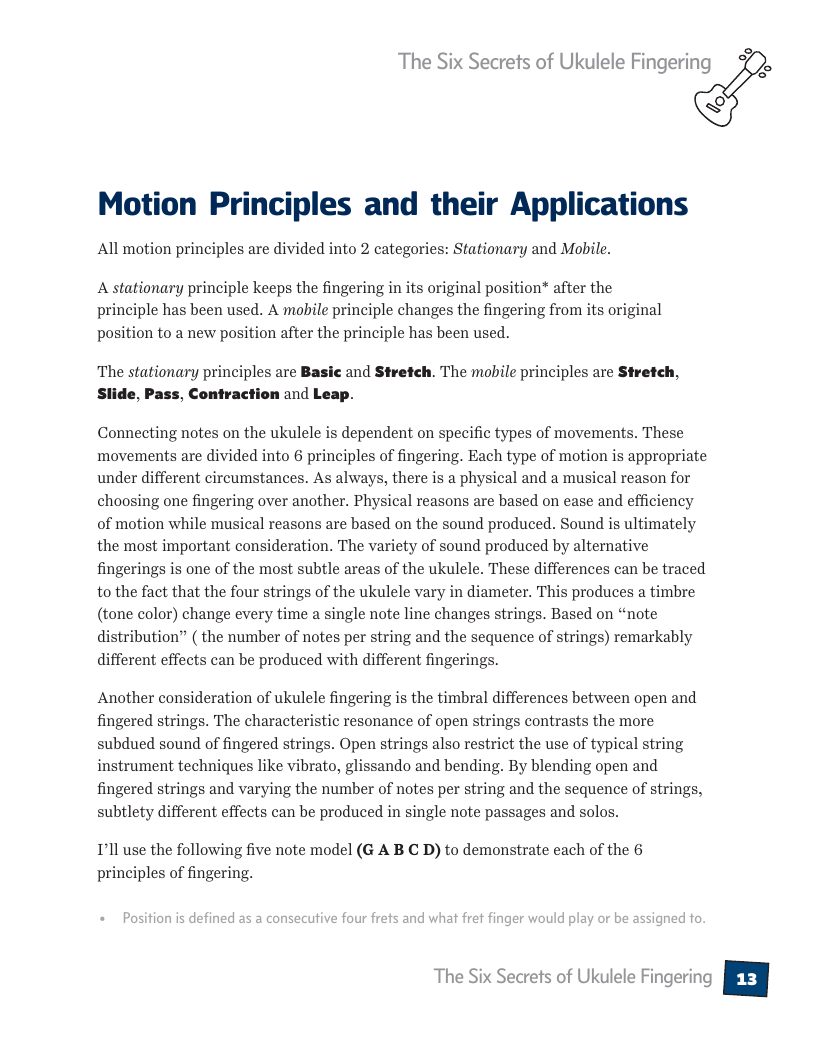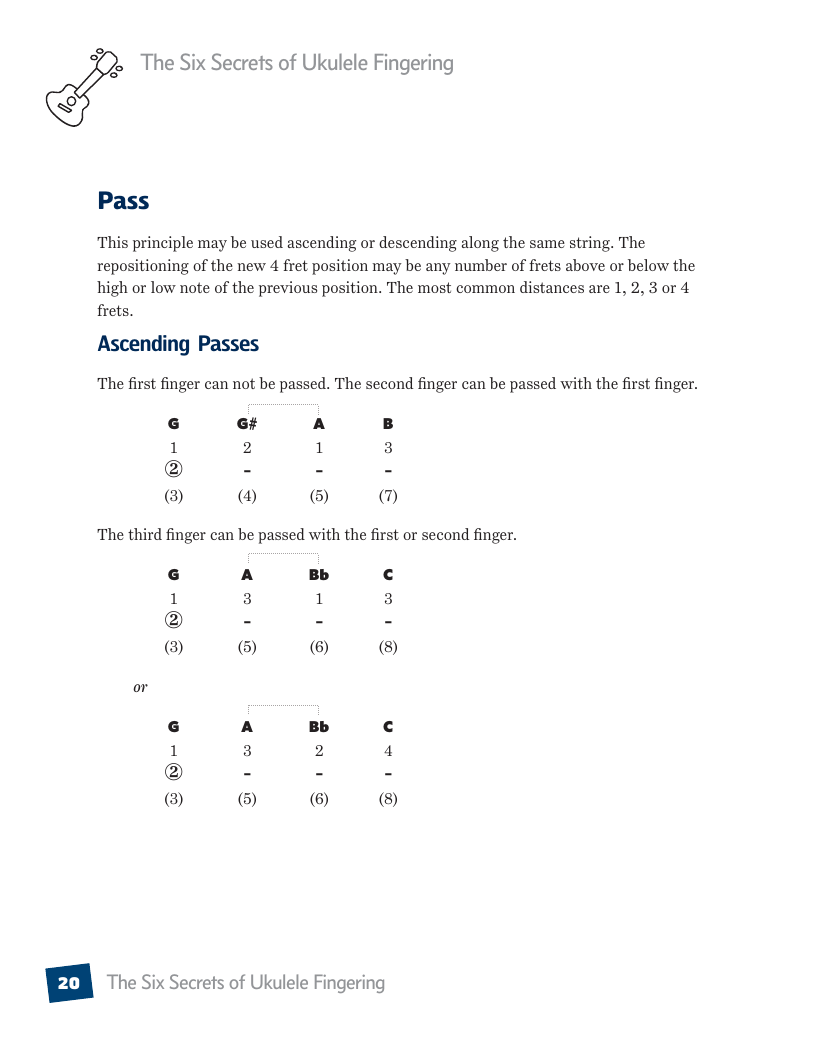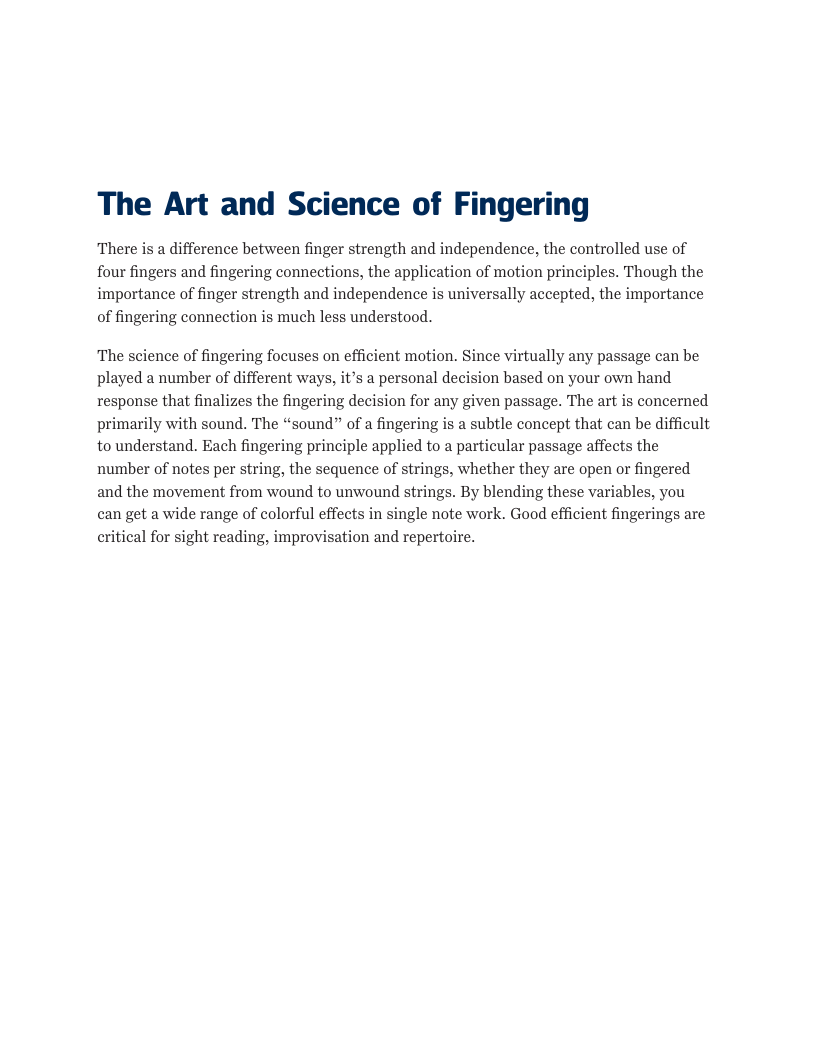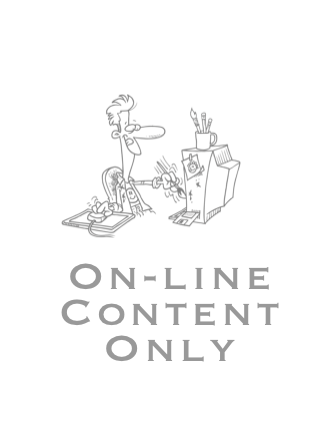Learn the six fingering principles to navigating the ukulele fingerboard. Fingering is one of the most universal topics. Whether your style is Rock, Blues, Country, Jazz or Classical, these principles will improve your technique, your solos, even your sight reading. Think of fingering as a series of pathways. When you learn to connect these pathways, there are benefits not only to technique but also to creativity.











































Author(s): Curt Sheller, Chuck Anderson
Publisher(s): Curt Sheller Publications
Published: Mar 15, 2006
Updated: Dec 4, 2024
ISBN-13: 978-1-60321-041-6
Size*: ANSI A
Pages: 42
Hard Copy Price: $19.95
PDF Price: $9

• click to Hide more info • click to Show more info

- A4 (210 x 297 mm / 8.3 x 11.7 in)
- ANSI A (US Letter): (8.5 x 11 in / 216 x 279 mm)
- Legal US Legal: (8.5 x 14 in / 216 x 356 mm) shown for reference
Scale to Fitand the A4 size will print out fine.
Learn the six fingering principles to navigating the ukulele fingerboard. Fingering is one of the most universal topics. Whether your style is Rock, Blues, Country, Jazz or Classical, these principles will improve your technique, your solos, even your sight reading. Think of fingering as a series of pathways. When you learn to connect these pathways, there are benefits not only to technique but also to creativity. All fingering on the ukulele can be reduced to 6 principles of motion. Each principle has physical and musical characteristics that you can use to improve your playing.
Introduction
Fingering is one of the universal topics. Whether your style is Rock, Blues, Country, Jazz, or Classical, these principles will improve your technique, your solos, even your sight-reading.
Think of fingering as a series of pathways. When you learn to connect these pathways, there are benefits to technique and creativity. All fingering on the ukulele can be reduced to six principles of motion. Each principle has physical and musical characteristics that you can use to improve your playing.
Hand Position and Technique

highthumb position has always been a controversial subject. If your thumb takes a
highposition, the finger span is reduced from four to three frets. You'll need more movement and effort to play anything in the standard four fret position.
highthumb position is often used as a leverage device for bends and vibratos in Blues and Rock music. It is an exceptional position and should not be a fundamental position. Work to develop a low thumb position.
Finger Independence and Strength
- Play the G♯ note — finger 1, string ④ fret (1)
- Play the A note — finger 2, string ④ fret (2)
- Play the A♯/B♭ note — finger 3, string ④ fret (3)
- Play the B note — finger 4, string ④ fret (4)
- Introduction 5
- Hand Position and Technique 9
- Finger Independence and Strength 10
- 4 Finger Combinations 11
- 2 Finger Combinations 11
- 3 Finger Combinations 11
- Notes on the Fingerboard 12
- Motion Principles and their Applications 13
- Stationary 14
- Mobile 14
- Summary of Fingering Principles 17
- Basic Applications of the Motion Principles 18
- Priority of Motion Principles 19
- Motion Principles - the Details 19
- Basic 19
- Slide 19
- Pass 20
- Ascending Passes 20
- Descending Passes 21
- Contraction 23
- Ascending Pitch Contractions 23
- Descending Position Changes - Same String 23
- Descending Pitch Contractions 24
- Ascending Position Changes - Same String 24
- Ascending Pitch Contractions 25
- Descending Position Changes - Cross String 25
- Descending Pitch Contractions 25
- Ascending Position Changes - Cross String 25
- Stretch 27
- Leap 29
- Double Stop Fingering 30
- Double Stops on Adjacent Strings 30
- Non Adjacent Strings 31
- Motion Principles Applied 33
- Model One - Single Principle Solutions 34
- Basic 34
- Slide 34
- Passing 34
- Stretch 35
- Contraction 35
- Leap 35
- Model Two - Combined Principle Solutions 35
- Slide and Stretch 35
- Passing and Slide 35
- Contraction and Passing 36
- Stretch and Contraction.36
- Slide and Contraction.36
- Passing and Leap 36
- The Art and Science of Fingering 36
- Reading 38
- Improvisation 38
- Phrasing 40
- Conclusion 41
Any owners of the book can e-mail curt@curtsheller.com for an updated version.
- 2024-12-04 — pg 20, the 1st Ascending Pass example notes should be G G# A B .
- 9 AUG 2021 — Book updated and corrections made. Fixed a bunch of the examples in the back part of the book. — OOPS!
- 21 JAN 2010 — Book updated and corrections made. Changes when made to a few of the examples.
- 17 OCT 2003 — Book Released and Errata Log File Created

Slide, used when the passage cannot be played within a single 4 fret span or when more notes per string required to produce a particular effect. I's also used in situations where a gradually ascending or descending diagonal motion best solves the physical and musical demands of the passage.

To play the ukulele effectively, your fingers need physical strength, agility, flexibility and coordination. This four finger-four note drill is designed to get your hands in shape. These exercises work no matter what style of ukulele you play or want to play.

Slide is used when the passage cannot be played within a single 4 fret span or when more notes per string required to produce a particular effect. I's also used in situations where a gradually ascending or descending diagonal motion best solves the physical and musical demands of the passage.

Pass maximizes the number of notes per string, making the timbre consistent. It's used to move up or down the neck to cope with a passage in which the range is unusually large. The pass provides an effective way to move straight up the first string. It's particularly useful in developing 3 octave fingerings and in playing melodies with an adjacent drone string.

Slide is used when the passage cannot be played within a single 4 fret span or when more notes per string required to produce a particular effect. I's also used in situations where a gradually ascending or descending diagonal motion best solves the physical and musical demands of the passage.

To play the ukulele effectively, your fingers need physical strength, agility, flexibility and coordination. This two finger-two note drill is designed to get your hands in shape. These exercises work no matter what style of ukulele you play or want to play.

Just what are the fingers of the plucking and fretting hand called. There can be a bit of confusion as to what the names and numbers of your fretting hand and the plucking or strumming hand are. Here are some of the common fingering notations I’ve encounter over the course of my studying ukulele and guitar.

The QUICKSTART — Scale and Arpeggio Fingerings Series is a concise, well-organized series of books, lessons, and workshops ideal for any guitar, ukulele, or bass player beginning to explore “improvisation”. Unlike so many other instructional materials on the market, The QUICKSTART — Scale and Arpeggio Fingerings Series keeps a sharp focus on the essential scales and arpeggios, their fingerings and their related chords. All material is covered in every key.

Finally, learn the names of the notes of the ukulele fingerboard in C tuning .

Learn the six fingering principles to navigating the ukulele fingerboard. Fingering is one of the most universal topics. Book: Six Secrets of the Ukulele Fingering

Harmonic Analysis is the understanding of the functional sequence of chords. It is the process used to analyze the harmonic structure of a progression, song or composition. Book: Harmonic Analysis for Scale Selection and Chord Substitution

Learn to read single note melodies in the first/open position is a lot easier than you might think. Book: Ukulele – Reading Music Series – Primer

An organized collection of daily practice and reference material for the contemporary ukulele player for developing the vocabulary and knowledge necessary for single note playing. Book: Daily Practice Material for the Contemporary Ukulele
Checkout the Books & Reference Charts for additional Handy, Dandy Reference Charts.

Ukulele Fingerboard Chart for C Tuning, Low or High G – G C E A

Ukulele Fingerboard Chart for G Tuning, Low or High A – D G B E

A handy reference chart of all 15 major and relative minor key signatures. US Letter 8.5 x 11 sized (ANSI-A), A4
Checkout the Books & Reference Charts for additional Handy, Dandy Reference Charts.












.jpg)